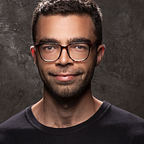4 User Research Lessons From “The Big Short”
Released in 2015, “The Big Short” is based on a true story about a group of investor who decided to bet against the real estate market, just before the 2008 financial crisis.
Starring Christian Bale, Steve Carrel, Brad Pitt and Ryan Gosling, the movie didactically — and with a black humor pinch — presents the backstage of the first financial cataclysm of the century.
Given the fact that the movie is a romanticized version of real life, I noticed some good user research practices on the script.
(Spoilers ahead)
(And yes, it is on Netflix)
1. Some truths are already there
Michael Burry (Christian Bale), a hedge fund manager, drove into quantitative data and discovered that the American real estate market was extremely unstable and based on high risk and low quality debts (Subprime).
This way, he could predict that the real estate market would collapse in the second quarter of 2017.
The data was already there, but no one cared to analyze them in such diligent way like Burry did. In one scene, one of the shareholders ask him:
SHAREHOLDER — And how do you know the bonds are built on subprime crap? Aren’t they filled with hundreds of pages of mortgages?
MICHAEL BURRY — I read them.
SHAREHOLDER — You read them? No one reads them. Only the lawyers who put them together read them.
MICHAEL BURRY — I don’t think they even know what they made.
What kind of data is hidden within your product, which maybe has the power to give you clues about how the market and consumers will behave in the future?
What behavior patterns can we observe in the quantitative data that we got?
I see designers studying about metrics and predictive analysis for business in order to understand how to work with this data in a better way. I bet it’s a skill the market will demand even more in the next years.
2. Data and guts walk into a bar…
I know you've been there: you find information that stands against the group deep beliefs. If so, what do you do next?
In the movie, Michael goes through a similar situation, but infinitely more delicated: he decides to bet his investors money AGAINST the real estate market, which is seen by everyone as a synonym of stability.
Michael is pressed by the investors to cancel the operation, but he stands up for two years (TWO YEARS), until the real estate market finally breaks giving him US$ 2.5 bi of profits.
Even succeeding, Michael closes the investment fund after sharing the profits, because of such huge stress level.
To challenge the status quo, we have to develop resilience in order to advocate for ourselves, and, even more important, to not commit political suicide.
3. Right question, right method
Ryan Gosling’s character tries to convince Mark Baum (Steve Carell) to also invest against the real estate market. He even takes a statistician to the meeting, to ensure the veracity of his arguments.
Mark Baum is flooded by quantitative data during the presentation. All of them make sense. Even though, Mark doesn’t believe: how is the real estate market going to fall apart?
Still not satisfied, Mark decides to visit newly released real estate developments, speaking to brokers and low-income folks who bought mortgages.
Quantitative data is able to answer questions like How much, When and What. Qualitative data answer the Whys and the Hows. Mark Baum needed a new layer of data to take an important decision and for that he had to use another method to acquire them.
One method is not better than the other, and it’s interesting to see that Mark didn’t ask for more answers to the questions that had already been answered. He needed new questions.
4. Don’t ask if everything is going to be ok
During field research, Mark and his team made questions like:
How many loans do you sell each month?
And four years ago?
How many of them are rejected?
Does your firm check it?
Do people know what are they buying?
Could you see a pattern here?
He doesn’t asks “Do you think a housing bubble exists?” or “Do you think you will be able to honor your installments until 2007?”. If he had asked that, he would get opinions. Those same opinions could not stop the finacial apocalypse that was about to happen. But behavior could.
Mark rises two hypotheses before going to the field:
Is there a housing bubble?
If so, how big is it?
To validate those hypotheses, he makes just questions on past and present mode. He is looking after facts and behaviors, not people’s opinions.
With the Google-Forms-mania, I see many opinion-driven surveys, asking if users “would use” a certain product or service. It’s important to remember that opinions are different from behavior, and that the way we ask may bias the data.
Asking for opinion is ok, yes, but in the right context.
—
If you’ve already seen the movie, I recommend that you watch it again, with a user researcher mindset. Can you identify other patterns?
And, of course: is not on our job description to predict financial disasters. However, if we get enough maturity to act cool in scenarios that challenge our beliefs, that’s enough for me.
Translated by: Mônica Bulgari
